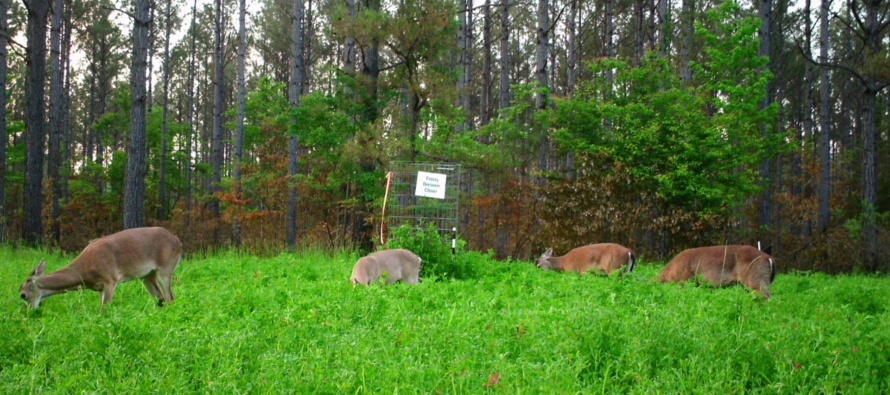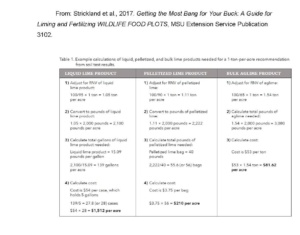Special Agents (Lime Version)

Related Articles
- Fertilizing Cotton with Poultry Litter 5
- Spring Nitrogen Fertility Suggestions for Wheat 0
- Micronutrients for Mississippi Crop Production 4
Latest Tweets
Acid pH in many Mississippi soils challenges plant growth regardless of scale, from a 400-acre row crop field to the back yard. While alkaline pH soils present some issues in the Blackland Prairies and some salt-impacted areas in the state, that is a different subject for another day.
Maximizing plant nutrition is key to the profit-loss statements of many farms. Most farmers and consultants with significant acres use dry bulk materials: calcite, dolomite, or Mississippi marl when soil test recommendations call for lime. Because farms are business-oriented, liming preferences follow a ‘price sensitive’ market. No in-state quarries produce calcitic or dolomitic lime thus locating, acquiring, transporting, and applying these materials requires significant investment in management, money, labor, and time.
Different factors influence ‘price insensitive’ lime markets. The soil chemistry is the same, however management goals of home lawns and gardens, landscaping, wildlife food plots, or other small acreage plantings usually do not include potential profit.
This is not to discount optimizing value received for the investment as no one wants to waste money. Non-chemical considerations such as getting the material to the site, and availability and ease of application may affect options. Some alternative lime materials rather than bulk ag lime may be appropriate in these smaller acreage, non-field scale situations.
One option for these small acreage areas is liquid lime. Liquid lime materials are comprised of very finely ground aglime mixed with water, and some cases, a liquid nitrogen fertilizer. The product is 50-70% aglime, the remainder liquid, and as such, is usually easy to apply. While the very finely ground aglime material in the product will react quickly in soils, claims that less material is needed are inaccurate. The rapid pH adjustments often observed with these materials will fade away after a few months – this short window of effectiveness is a key factor in deciding whether this product is a good choice for your situation. Precipitation and other weathering factors will push the pH lower, and additional lime will be needed to maintain the higher pH.
Another option is pelletized lime. Pelletized lime is produced by compressing smaller lime particles through rollers into granules, and/or coating them with materials such as lignosulfonate. Pelletized limes are easier to spread than finely ground lime materials and are less dusty, thus often are preferred for lawn and garden applications. These products should react in soils at rates comparable to bulk ag lime with similar sized (very small) particles.
The publication, Getting the Most Bang for Your Buck: A Guide for Liming and Fertilizing Wildlife Food Plots is a resource that addresses many questions about managing wildlife food plots. Table 1 (in the publication and included here) compares the economics of bulk lime versus pelletized or liquid limes using the retail prices of 2016-2017. While the prices are dated, the relative values can still be used for comparison.
Another publication, Agricultural Limestone’s Neutralizing Value, explains Relative Neutralizing Values (a must when comparing the effectiveness of multiple liming compounds). Each example will achieve the desired decrease in soil acidity (increased pH) over time. However, note the substantial difference in price between the three options of liming materials listed.
Always check whether the materials under consideration can neutralize soil acidity. Calcium nitrate, calcium chloride and calcium sulfate (gypsum) do not affect soil pH. These compounds are neutral salts: upon dissolving in the soil the calcium cation will adhere to the soil exchange site, however the accompanying anions do not neutralize soil acidity.
Know your situation, learn the best available materials for you, and remember that a pound of any lime is simply a pound of lime, not six to ten pounds.
The author appreciates the assistance of Dr. Bronson Strickland of the MSU Deer Ecology and Management Lab with preparation, and reviews by Drs. Mike Cox and Keri Jones. Dr. Jones is the coordinator of the MSU Extension Soil Testing Laboratory.





Let me tell You a sad story ! There are no comments yet, but You can be first one to comment this article.
Write a comment